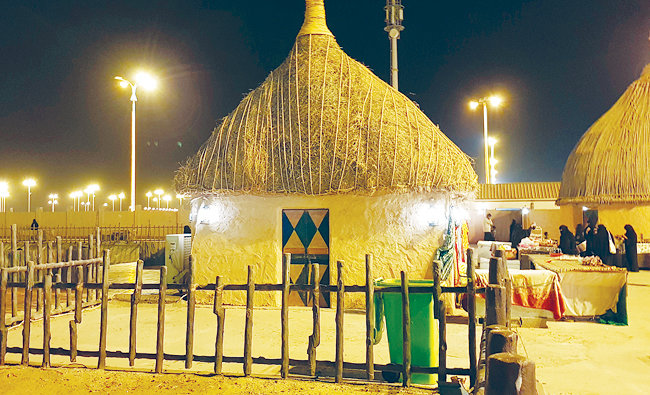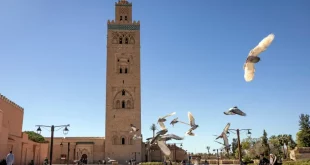
JAZAN: Jazan Heritage Village, at the southern Jazan corniche, is a cultural landmark that captures the ancient history of Jazan, linking it to its flourishing present.
Visitors to this village can see the province’s past displayed through live symbols of the cultural and civilizational diversity of the region’s different environments and terrains.
The village was established in 2009 based on directives of the governor of Jazan, Prince Muhammad bin Nasser bin Abdul Aziz, following the success of the first Jazan Winter Festival, which honored the region’s heritage and archaeological treasures. The village has become the permanent venue for this festival.
The village’s visitors are first met by its gate, which leads to the traditional three-story house, Al Baitul Jabali, with its solid architecture that was specially designed to suit the mountain’s environment and overcome natural erosion.
Further into the village, visitors can see Al Baitul Tihami, the traditional Jazan hut made of mud, which gave it the name Al Ousha Attiniya (the mud nest). This house’s dwellers enjoyed the simplicity and elegance of the Tihami lifestyle.
Al Baitul Farasani is connected to the village by a bridge. This traditional house is an embodiment of Farasan Island with its sea, pearls, and shells.
In the center of the village, visitors can experience ancient commercial life in the souk (the traditional market), where archaeological artifacts, traditional pots, and aromatic plants are displayed. The air here is filled with the aroma of pandanus tectorius and Arabian jasmine. The souk also contributes to promoting the region’s old crafts, and attracts artisans to display their products.
The heritage village focuses on showing the different cultural aspects of Jazan, including traditional arts and folkloric colors, in addition to offering cultural heritage programs, special programs for children and youth, and poetry reading events.
The village captures the lifestyles of people who inhabited Jazan long ago and used natural resources to build houses, furniture, and utensils, turning Jazan into a great civilization. This village connects the past generations with the current one in hopes of further work and development.
Every year, the Jazan Heritage Village welcomes large numbers of visitors who come to enjoy the region’s heritage, cuisine, and shops during the Jazan Winter Festival.
One of the village’s important craftsmen, Mohammed Ahmed Al-Ghamari, crafts ancient daggers and swords, which is a profession passed down to him from his father, grandfather, and great-grandfather; in addition, he makes agricultural tools from iron, like axes.
“The Ghamari swords and daggers are famous in Jazan for being some of the region’s finest swords due their high quality and professional craftsmanship,” he said.
“The daggers and swords’ grips are made from deer antlers and bones,” he continued. “They are sculpted in a way that makes the sword or dagger more beautiful.”
“The blades of the daggers and swords are made of solid steel, sharpened, and sculpted by hand using my special lathe,” he added.
Al-Ghamari also explained that these products are priced differently compared to imported swords and daggers because of the great difference in quality.
“Imported swords largely impact our centuries-old craft and trade,” he said. “The swords we make cost at least SR1,000 ($267), depending on the effort put into sculpting it, while imported ones cost a maximum of SR120 — some even cost as little as SR30.”
Moreover, the city of Jazan is famous for its sesame oil presses. Sesame oil is sold to visitors at varying prices.
In the souk’s center, there is a model of an ancient sesame oil press, which was traditionally camel powered; camels would be tied to the mill in a certain manner and would circle it in order to press the sesame.
Source: http://www.arabnews.com
 Sri lanka Muslims Web Portal Diversity and Inclusiveness
Sri lanka Muslims Web Portal Diversity and Inclusiveness



